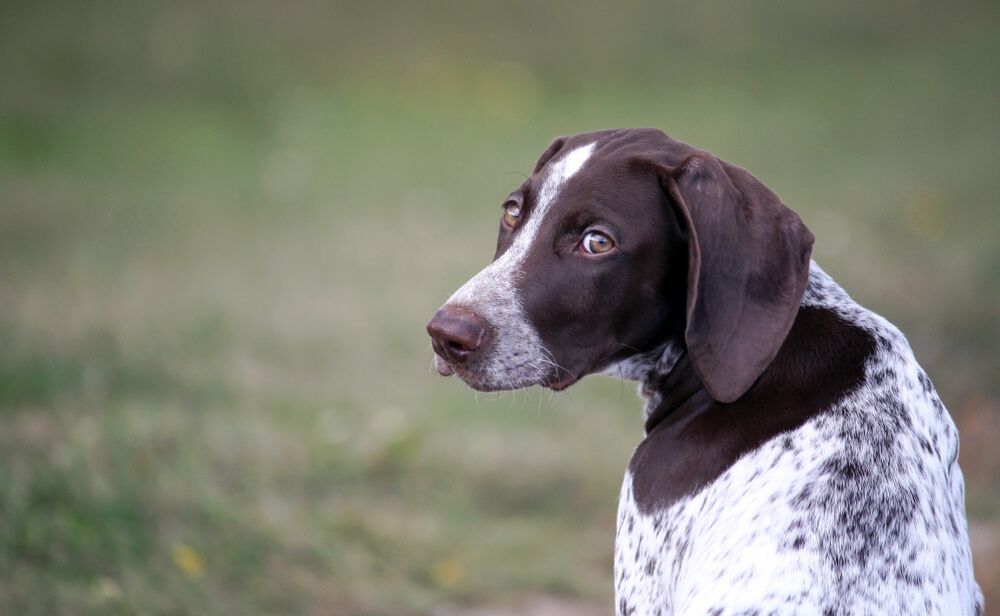Hey Ollie blog readers! We’re offering you an exclusive 60% OFF your starter box! Try now!
You can never predict the health future of any dog, but there are certain types that tend to have fewer instances of genetic diseases and a longer average lifespan. Before you choose your next pet, take the time to research common health problems and get to know the most serious risks for each breed.
“I think generally choosing a purebred, you know a bit more about what that breed is genetically predisposed to,” says Dr. Betsy Miller, DVM, MPH. “If you’re going to get a large breed like a Bernese Mountain Dog or Labrador Retriever, for instance, arthritis or hip dysplasia might be an issue. Or there are some breeds that are really prone to skin allergies and that requires a lot of lifelong management.”
If you decide to adopt a dog from a shelter or local rescue, learn as much as you can about their background and potential breed mix. “I think generally a vet would say a mixed-breed mutt has kind of ‘survival of the fittest’ characteristics and they often don’t have the same genetic issues that purebreds do,” Miller says. “But that being said—-they absolutely can.”
Overall, choosing an animal that best suits your lifestyle and environment will be the key to happiness for both of you. It’s a personal decision what works best for your household and what you can manage. “It’s important to do your research and speak to a vet,” Miller says. “Talk to friends or family with that breed to see if it’s truly a good fit, and to know if you’re prepared for what comes along with it.” Take time to analyze your living situation: Do you have small children? Do you live in an apartment or yardless home? It’s important to be realistic about the type of environment you’re able to provide for a dog to allow the both of you to thrive.
All dog owners should be mentally ready for the possibility that your pet may suffer from unexpected hereditary diseases at some point in their life, which goes for both purebred and mixed-breed pups. And for any dog to live its best healthy life, the same key principals apply: They need a nutritious, well-balanced diet to maintain heart health, longevity, immunity, and proper digestion. Ollie’s custom formulas simplify this aspect of daily health by personalizing your dog’s food based on age, breed, and other factors. Regular visits to the vet will ensure they’re maintaining a healthy weight and staying up to date on vaccinations. Exercise and mental stimulation is important for all dogs—particularly those high-energy, working breeds.
Based on size, lifespan, and generally having fewer diseases and health issues, here are 10 of the healthier dog breeds.
- Australian Cattle Dogs

This high-energy working breed is super intelligent and has an average lifespan of 12–15 years. They do best when given a job or purpose—they were developed to herd cattle, after all—and keeping them mentally and physically stimulated is essential to their well-being. Agility, obedience training, and interactive games are all good for their mental sharpness. They can develop hip or elbow dysplasia and are susceptible to eye and ear issues, but generally these active pups tend to be sturdy animals when given the proper nutrition and exercise they need.
- Foxhound

Also a working breed, the Foxhound was bred to, of course, hunt foxes. Although they’re now less of a super hunter and more of a family companion, this mid-size dog is bred to be very functional, which bodes well for staying healthy. Their short coats don’t need a ton of grooming and they have a fairly even temperament that works well for interacting with kids. Foxhounds need a moderate amount of daily exercise in the form of walking or jogging. Obesity can be a serious health problem, making them more vulnerable to joint problems (knee, hips, elbows), digestive disorders, and heart disease.
- German Shorthaired Pointer

Known for their intelligence and unstoppable energy, the German Shorthaired Pointer has an average lifespan of 12–14 years. These hunting dogs have an incredible sense of smell and an athletic build that mandates lots of physical activity. Daily exercise, mental stimulation, and access to the outdoors is important to this high-energy breed. They can be prone to hypothyroidism, hip dysplasia, and gastric torsion.
- Border Collie

The quick-learning, clever Border Collie typically lives 10–14 years. This energetic herding breed is renowned for its agility and, as a people-pleaser, is eager to learn through training. Seizures and hypothyroidism are two of the most common health issues in Border Collies. Frequent exercise, outdoor access, and obedience training will keep this intelligent breed at its sharpest and happiest.
- Australian Shepherds

Living anywhere from 12–15 years, the agile, lively Australian Shepherd does best with owners who lead an active lifestyle. Crazy smart and very obedient, Aussies are loyal to their owners—especially if you keep them entertained with plenty of fetch, games, and long bouts of exercise. They can develop hip or elbow dysplasia, hypothyroidism, or congenital eye conditions.
- Mixed Breed

Dogs who are made up of a mix of breeds may arguably inherit fewer genetic diseases than their purebred counterparts. Given that you can’t always figure out the history of your adorable mutt, this isn’t always the case, but they tend to be hearty, sturdy dogs with healthy lifespans.
- Chihuahua

This long-living breed-—typically 14–18 years!—-is the smallest in the world. These spritely and sassy pups are known for their loyalty and are happiest snuggled up on your warm lap or following you around the house. While they don’t need a ton of exercise (short walks are good), they are intelligent and enjoy learning—so definitely incorporate obedience training into their daily routine. Chihuahuas can suffer from hypoglycemia, obesity, epilepsy, or joint issues.
- Dachshund

If given regular exercise and fed a healthy diet, Dachshund can have a long, healthy life. These long-bodied, short-legged sausage dogs typically live to about 12–16 years. Given their body shape they can commonly develop back issues, but if kept lean it definitely decreases the chances for future disc issues. They are also prone to dental disease, heart problems, and skin conditions.
- German Pinscher

These muscular working dogs are highly trainable and very intelligent, and their life expectancy is typically 12–14 years. With a short and sleek coat that ranges in color from black to red to tan, the German Pinscher is very low maintenance on the grooming front. They do, however, need a ton of daily exercise as well as constant new types of mental stimulation. Although they have a super solid physique, they can develop hip or elbow dysplasia, cataracts, thyroid disorders, or cardiac disease.
- Shih Tzu

The adorable Shih Tzu is an outgoing, playful breed with long fur that requires daily brushing to keep clean. Live in a small space with no yard? No problem for these short-legged pups, who are content just chilling by your side or playing with kids. With a life expectancy of 10–18 years, the Shih Tzu is generally healthy but can develop hip dysplasia, patellar luxation, or cataracts.
The Ollie blog is devoted to helping pet parents lead healthier lives with their pups. If you want to learn more about our fresh, human-grade food, check out MyOllie.com.
Tagged As:

The nutrition your dog needs,
the food they want.

Enjoying our articles? Subscribe our Newsletters and get new articles directly to your inbox
You might also like
18 September 2025
4 MINS READ
Is Fresh Dog Food Easier to Digest?
Yes, fresh dog food is generally easier for dogs to digest than highly processed kibble. Because it’s made with whole ingredients, gently cooked, and free from unnecessary fillers, fresh food supp…
by Ollie Pets
18 September 2025
5 MINS READ
Can I Rotate Fresh Dog Food Flavors?
Yes, it’s safe to rotate fresh dog food flavors, and many dogs actually benefit from the variety. At Ollie, we offer multiple fresh recipes, like Beef, Chicken, Turkey, Lamb, and Pork so you can…
by Ollie Pets
18 September 2025
5 MINS READ
Is Fresh Dog Food Safe During Power Outages?
Fresh dog food is only safe during a power outage if it has stayed cold, specifically, below 40°F. Once the temperature rises above that point, bacteria can start to grow, and the food may no lon…
by Ollie Pets







